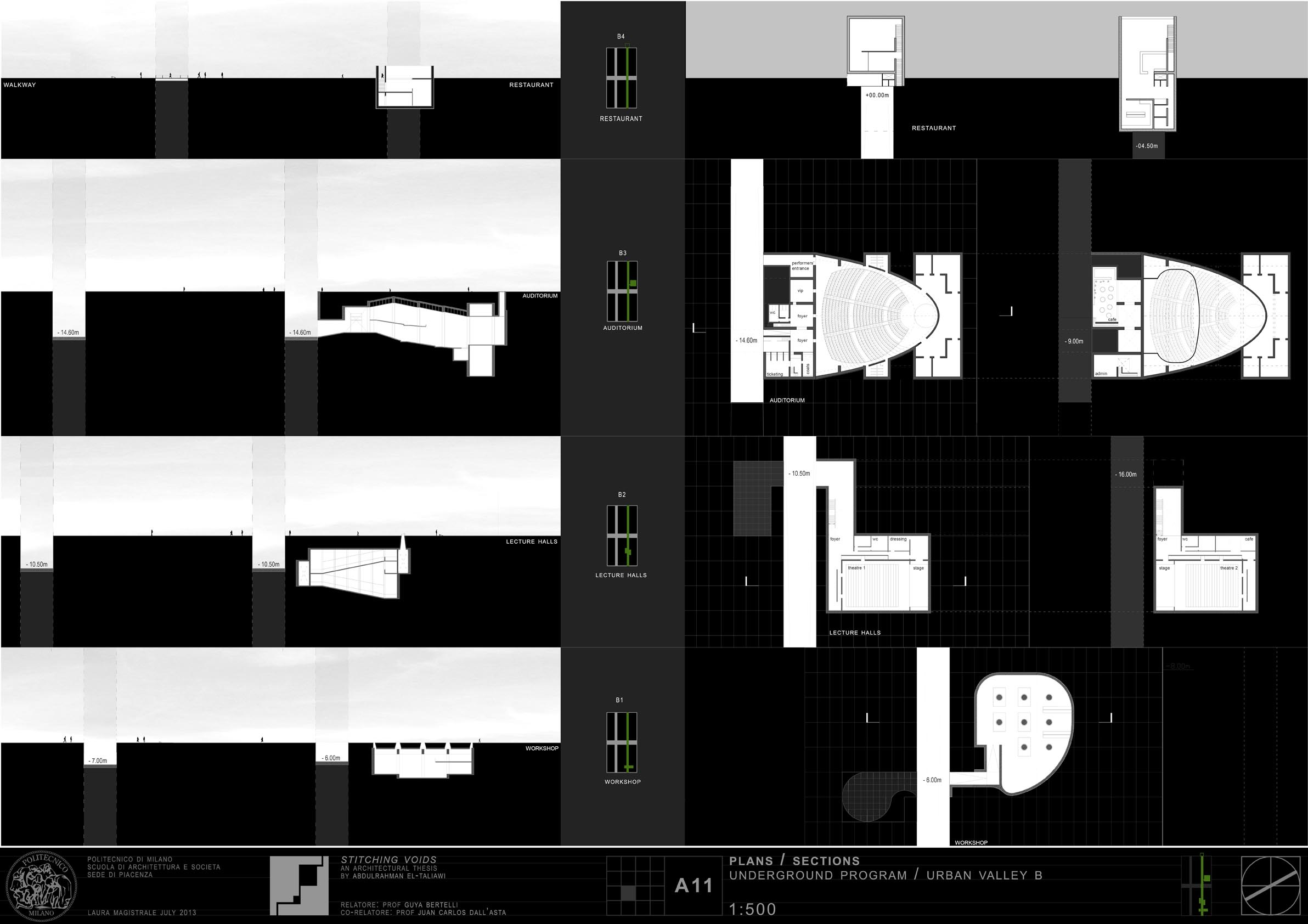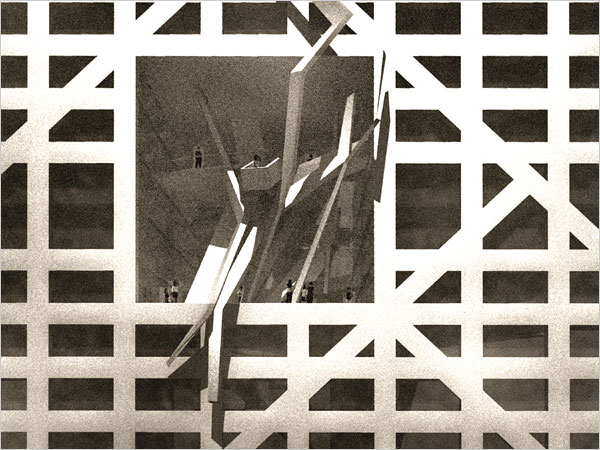/ARCHITECTURE
Year 2013
Location New York
Project Cultural Centre Complex
Role Author
School Politecnico di Milano
Supervisors Guya Bertelli, Carlos Dall’Asta
Status Academic
Grade 8/8
Location New York
Project Cultural Centre Complex
Role Author
School Politecnico di Milano
Supervisors Guya Bertelli, Carlos Dall’Asta
Status Academic
Grade 8/8
Description
"When there is nothing, everything becomes possible". Located in the West Side Hudson Yards in New York, this underground Theatre City project proposes to transform what became an urban industrial void, Hudson Yards, into a massive green public space while embedding the cultural program of a Museum and Theatre Complex within its soil. The project aims to regenerate New York through restituting its grid. The strategy is to engage with the context of the site, Manhattan, by complimenting it with the elements of its contradiction. Where the viewer expects architecture, expressed typically in above-ground vertically-up-shooting solid structures, the project will submerge with voids beneath the soil. Where the user expects infrastructure, the project will embed cultural programs, carved within the terrain. Where order is expected, in a mad instant, chaos will break in. On the urban level, it operates on urban voids with green and underground public spaces. On the architectural scale, the Underground Sculpture Museum is designed as the ant’s house, descending slowly from the urban valley towards underground sculpted spaces inspired by the works of Eduardo Chilida. A dialogue of light and shade animates the volumes and spaces below.
"When there is nothing, everything becomes possible". Located in the West Side Hudson Yards in New York, this underground Theatre City project proposes to transform what became an urban industrial void, Hudson Yards, into a massive green public space while embedding the cultural program of a Museum and Theatre Complex within its soil. The project aims to regenerate New York through restituting its grid. The strategy is to engage with the context of the site, Manhattan, by complimenting it with the elements of its contradiction. Where the viewer expects architecture, expressed typically in above-ground vertically-up-shooting solid structures, the project will submerge with voids beneath the soil. Where the user expects infrastructure, the project will embed cultural programs, carved within the terrain. Where order is expected, in a mad instant, chaos will break in. On the urban level, it operates on urban voids with green and underground public spaces. On the architectural scale, the Underground Sculpture Museum is designed as the ant’s house, descending slowly from the urban valley towards underground sculpted spaces inspired by the works of Eduardo Chilida. A dialogue of light and shade animates the volumes and spaces below.
















